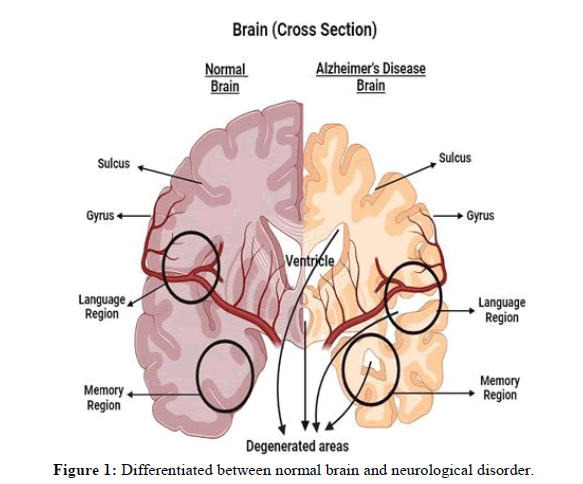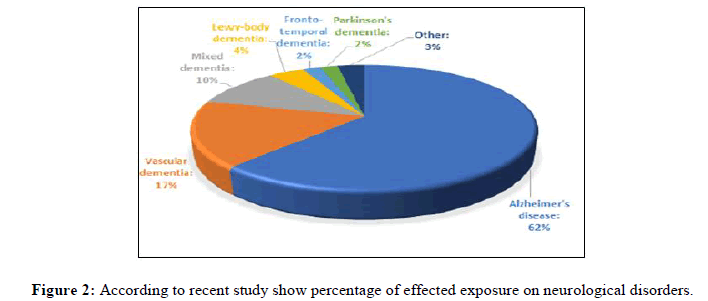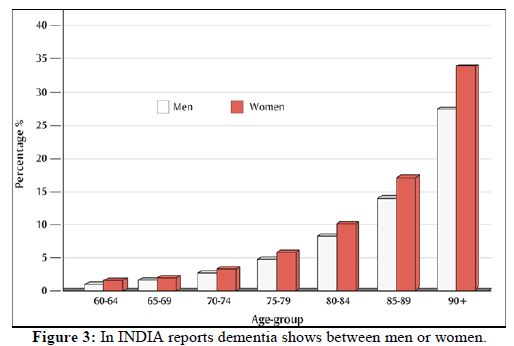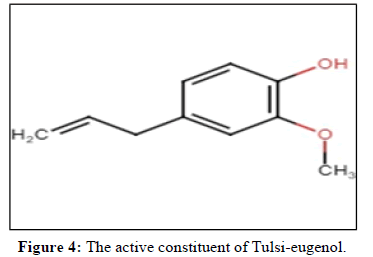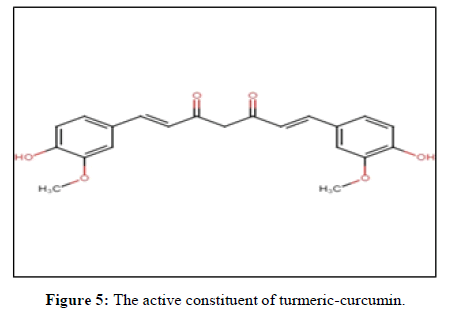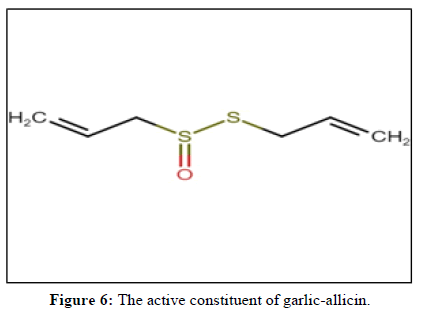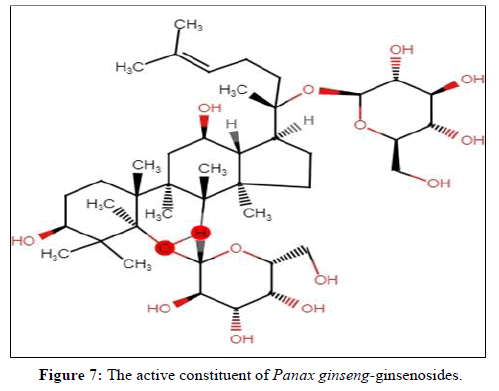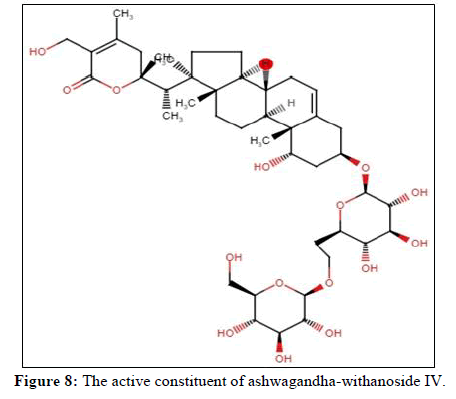Review Article - Der Pharma Chemica ( 2024) Volume 16, Issue 2
Recent Advancement of Phyto-Formulation in the Treatment of Neurodegenerative Diseases
Komal Jain*, Ashraf Ali and Swati BiswasKomal Jain, Department of Pharmaceutical Chemistry, Lloyd School of Pharmacy, Greater Noida, India, Email: KOMALJAIN5689@GMAIL.COM
Received: 14-Mar-2024, Manuscript No. Dpc-24-129525; Editor assigned: 19-Mar-2024, Pre QC No. Dpc-24-129525 (PQ); Reviewed: 01-Apr-2024, QC No. Dpc-24-129525; Revised: 02-Apr-2024, Manuscript No. Dpc-24-129525 (R); Published: 29-Apr-2024, DOI: 10.4172/0975- 413X.16.2.274-279
Abstract
Pharmacological molecular pathways during an epileptic episode and dementia were examined in the current review, which offers a helpful therapeutic approach for the treatment of neurological illnesses. The current research states that various exceptional phyto-formulations are being created and have been validated by multiple clinical investigations. Because growth factors are expressed less frequently in the brains of people with Parkinson's or Alzheimer's disease, there is a correlation between poor endogenous protection and decreased neurogenesis and neuroplasticity. However, we speculate that the brain has a "neurodegenerative reserve" that may be used by growth factors or stem cell-neurorestoration therapies, at least in the early and middle stages of disease. However, further research is desperately needed to ascertain the optimal dosage and ratios for lowering the incidence of seizures.
Keywords
Neurodegenerative; Alzheimer; Amyotrophic; Dementia; Phyto-formulations; Neurons
Introduction
Various neurodegenerative conditions impact the human brain or spinal cord. The breakdown of nervous tissue can arise from sudden injuries or persistent illnesses. In adults, children and infants, acute neuropathology may stem from trauma to the head or spinal cord, infections, toxicity, liver failure and cerebral ischemia caused by events such as stroke, cardiac arrest or asphyxiation. Chronic and progressive neuropathology is observed in adult disorders like Alzheimer's disease, amyotrophic lateral sclerosis (Lou Gehrig's disease), Huntington's disease, multiple sclerosis and Parkinson's disease. Alzheimer’s Disease (AD) is the most common type of dementia and is a chronic neurodegenerative disease that usually starts slowly and worsens over time. It is the cause of 60%-70% of cases of dementia in the aging population where low levels of acetylcholine have been reported. Alzheimer’s brain arises from the accumulation of beta-amyloid protein fragments, forming hard plaques that interfere with the ability of acetylcholine to affect synaptic transmission and initiate inflammatory processes and alterations in the chemical nature of specific proteins-tau also lead to cell death in Alzheimer’s disease wherein neurons’ microtubules pair with other tubules producing neurofibrillary tangles that result in tubule disintegration and blocking neurotransmitters, leading to cell death [1].
Alzheimer’s disease is named after Dr. Alois Alzheimer, who first identified it in 1906. The hallmark brain abnormalities in Alzheimer’s include the presence of beta amyloid plaques and tau tangles. These abnormal structures disrupt communication between brain cells, leading to cell damage and death. The disease typically progresses in stages, starting with mild memory loss and confusion and advancing to severe cognitive impairment. Individuals may experience personality changes, difficulty with language and challenges in performing routine tasks. As Alzheimer’s advances, it affects various regions of the brain, impacting a person’s ability to remember. While age is a significant risk factor with the majority of cases occurring in individuals over. However, early onset Alzheimer’s can affect younger people. Genetic factors, family history and certain lifestyle factors also contribute to the risk. Genetics, lifestyle factors and other health conditions contribute to the risk. In January 2022, research is ongoing to develop diagnostic tools and treatments, with early detection considered crucial for potential interventions. Early symptoms include forgetfulness, difficulty with familiar tasks and changes in mood or personality. As it progresses, individuals may experience disorientation, language difficulties and even challenges with basic bodily functions. Taking care of someone with Alzheimer’s requires different types of help. This includes giving those medicines, doing activities to keep their mind active and supporting the people taking care of them. Alzheimer’s affects many people worldwide, so we are working hard to make more people aware of it, improve how we take care of those with the disease and do research to find a cure in the future [2].
Pharmacological neurodegenerative disorder of brain
Alzheimer's disease is a type of neurodegenerative illness that is typified by a gradual decline in cognitive abilities. The numbers of neurotic plaques in the neocortex and its number appear to be connected function and its impairment and reduction of cholinergic neurons. The presynaptic markers of neurotic plaques are made up of degenerating nerve terminals and axons that are typically surrounded by an amyloid core and contain reactive glial components [3].
The neurofibrillary tangle, an intra-neuronal mass made up of Paired Helical Filaments (PHF) with peculiar characteristics and normal intermediate filaments, is another pathologic hallmark of Alzheimer's disease. When examining the topographic distribution of brain tangles and plaques, of Alzheimer patients, the lesions are most frequent in areas that receive cholinergic innervation from the ventral forebrain. There is evidence that cholinergic nerve terminals are involved in the production of plaque and this cell group of cholinergic neurons seems to be particularly susceptible to the disease process. We have produced mono-clonal antibodies against homogenates of ventral forebrain tissue collected at autopsy from four patients with Alzheimer's disease in order to further identify the relationship between the lesions of the Alzheimer's brain and the ventral forebrain cholinergic neurons [4]. The result antibodies were evaluated using immunochemical and immune cyto chemical methods to determine their capacity to distinguish brain tissue from that of Alzheimer's disease patients and from that of normal persons (Figure 1).
Literature Review
Effects of exposure to scenarios about dementia on neurological disorders
The importance of this study panel of specialists regarding the incidence and prevalence rates of dementia in the future and dementia care patterns; second, to look into how future projections of costs for long-term care for elderly dementia patients might be affected by incorporating future scenarios based on their research. The goal was not to create precise estimates of future costs, as this would not be feasible given the inherent uncertainty surrounding future changes in the factors that drive the need for care. Projections on predetermined assumptions were to be made and their sensitivity to other assumptions based on professional opinions was to be tested. In below figure most of the person affected in Alzheimer’s disease and vascular dementia. In India, dementia affects the men and women both but in case of recent study women are more affected in man for neurological disorder as well as dementia (Figures 2 and 3) [5].
The higher percentage of dementia in elder women compared to men in Figure 3 may be caused by the longer lifespan of women in India. Studies on the age-specific incidence of dementia in the elderly, however, do not reveal a statistically significant difference between men and women. Therefore, it could seem that among older adults, gender is not a risk factor for AD or other dementias. It is anticipated that the number of dementia patients in the 60-75 age range will rise gradually over time and that after 2030, there will likely be a sharp rise in the 75+ age group.
Discussion
Different phyto-formulation used in Alzheimer disease
Tulsi
Tulsi, also known as Holy Basil, is a very important plant in Ayurveda, the traditional medicine of India. It belongs to the mint family and is wellknown for its healing and religious properties. People use its roots, seeds and leaves for their health benefits. Tulsi is a member of the Lamiaceae (mint) family and is characterized by its aromatic leaves and small purple or white flowers. There are several varieties of Tulsi, including Rama Tulsi (green leaf), Krishna Tulsi (purple leaf) and Vana Tulsi (wild leaf).It is a herbaceous, much branched annual plant found throughout India, it is considered as sacred by Hindus. The plant is commonly cultivated in garden and also grown near temples. It is propagated by seeds (Figure 4) [6-9].
Tulsi role in neurodegenerative disease
• Neuroprotective properties: The attribution of "neuroprotective properties" to Tulsi denotes its purported capacity to mitigate or prevent
damage to neurons. This designation underscores its potential as a protective agent against factors that could compromise the structural and functional integrity of brain cells.
• Safe guarding neuron structure and function: The assertion that Tulsi may contribute to "safeguarding the integrity and functionality of
neurons" signifies its prospective role in preserving the anatomical and operational aspects of neural cells. This aligns with the broader
objective of maintaining neuronal health and resilience.
• Protective role for brain health: Tulsi having a "protective role for brain” signifies that it may contribute to maintaining overall brain wellbeing.
• Memory enhancers: Tulsi alleviated the memory impairment and hippocampal neurodegenerative changes on the patients suffering from Alzheimer’s disease.
Turmeric
Turmeric, scientifically known as Curcuma longa, is a perennial herbaceous plant belonging to the ginger family (Zingiberaceae). Curcumin, derived from Curcuma longa, commonly known as Haldi or Turmeric, serves as a key spice in the culinary traditions of India, Asia and the Middle East, enriching curries and various spicy dishes. Ayurveda, the traditional Indian system of medicine, has embraced curcumin for its pain-relieving and anti-inflammatory qualities, addressing issues related to skin and muscle discomfort. Furthermore, scientific research has unveiled its potential anti-cancer properties (Figure 5) [10].
Turmeric role in neurodegenerative disease
Curcumin's neuroprotective role: Clinical studies highlight curcumin's efficacy in Alzheimer's disease. It acts as an antioxidant, antiinflammatory agent, reducing oxidative damage inflammation and beta-amyloid plaques. Anti-inflammatory properties: Curcumin has been recognized for its anti-inflammatory effects. Chronic inflammation is believed to contribute to the development and progression of Alzheimer's disease and curcumin's anti-inflammatory properties may help mitigate these effects. Potent immunomodulatory agent: Curcumin from turmeric modulates various immune cells, including dendritic cells, neutrophils, natural killer cells, macrophages, T cells and B cells. It induces regulatory T cell development and inhibits inflammation. Neutrophils show reduced oxygen radical formation, while natural killer cells exhibit increased antibody responses. Curcumin inhibits tumor necrosis factor alpha in macrophages, impacting adhesion molecules and suppressing NF-kappa B. In B cells, it diminishes IgM secretion and B cell proliferation. Notably, curcumin inactivates NF-kappa B, proving its potent immunomodulatory effects in positively influencing the immune system. Antioxidant properties: Oxidative stress is another factor implicated in Alzheimer's disease. Curcumin's antioxidant properties may counteract oxidative damage and protect brain cells from free radicals, potentially slowing down the progression of the disease [11].
Garlic
Garlic (Allium sativum L. family Liliaceae) is originally from Asia but it is also cultivated in China, North Africa (Egypt), Europe and Mexico Garlic (Allium sativa) is a plant characterized by its long, flat leaves resembling grass and a protective papery covering around its flowers. Clusters of greenish white or pink flowers are situated at the top of an elongated stalk, emerging directly from the flower bulb. This bulb serves as both a culinary ingredient and a medicinal source (Figure 6).
Garlic role in neurodegenerative disease
Memory enhancers: Garlic boosts serotonin levels in the brain, linked to enhanced cognitive functions like learning, memory and mood. Aged garlic extract inhibits cortical Acetylcholinesterase (Ache), crucial in Alzheimer's treatment. Antioxidant properties: In Alzheimer's treatment, while elevating Glutathione (GSH) concentrations, a potent internal antioxidant protecting brain cells from free radical damage. AchE inhibition may influence executive and attentional cognitive functions.
Panax ginseng
Ginseng is an old and popular plant that people in China and other Eastern cultures have used for a long time in their traditional medicines. The helpful things about ginseng were written down about 2000 years ago in a very old book called "the herbal classic of the divine plowman" by Ben Cao Jing. Scientists call ginseng by the name Panax ginseng Meyer and it's also known as the "king of herbs." It's a kind of plant that lasts for many years and people find it useful for various reasons (Figure 7).
Ginseng role in neurodegenerative disease
Ginseng, a natural plant, seems to help fight inflammation in the brain linked to Alzheimer's Disease (AD). Different parts of ginseng, like Rd, Rf, Rg1, Rb1 and Rg3, showed positive effects in studies:
• Rd helped improve memory by reducing inflammation in the brain.
• Rf protected brain cells from damage caused by AD.
• Compound K (CK), from ginseng, controlled inflammation in brain cells.
• Ginseng helps protect the brain from damage in neurodegenerative diseases. In Alzheimer's, a harmful protein disrupts calcium levels,
leading to issues. Ginseng supports brain health by managing calcium levels and reducing stress.
• These findings suggest that ginseng might be useful in lowering brain inflammation related to Alzheimer's disease.
Ashwagandha
Ashwagandha, scientifically termed Withania somnifera, is a well-liked herb within the ayurveda system of healing. This plant, categorized as a small shrub and part of the Solanaceae family, holds potential benefits for various ailments, primarily serving as a nervine tonic, offering a calming influence on the nerves. Commonly referred to as Indian Ginseng or Indian winter cherry, Ashwagandha is renowned for its rasayana property. Rasayana, whether in herbal or metallic form, acts as a formulation that encourages a state of youthful well-being for both the body and mind, promoting happiness Ashwagandha, derived from the roots of Withania somnifera, is traditionally used in Indian medicine (Ayurveda) for issues like weakness, insomnia and memory loss (Figure 8) [12].
Ashwagandha role in neurodegenerative disease
Ashwagandha seems helpful for problems in the brain, especially when it's not working well. It mimics the actions of a brain chemical called GABA, which is important for our brain's health. Ashwagandha and its component, withanoside IV, have been found to promote nerve growth. In a study, withanoside IV helped protect nerves and memory. Even after they stopped taking it, the good effects continued. This suggests Ashwagandha could be useful for brain problems, like dementia. In simple terms, Ashwagandha might help protect our brain and nerves, making it a promising option for brain-related issues.Ashwagandha, a recognized Ayurvedic Rasayana, fall under the Medhyarasayanas subgroup, aiming to enhance mental capacity. Primarily used for boosting intellect and memory, Ashwagandha holds promise in supporting cognitive health. This is particularly significant for individuals dealing with neurodegenerative diseases such as Alzheimer's or dementia, where memory and mental functions are compromised. In simpler terms, Ashwagandha's properties make it potentially beneficial for maintaining mental abilities and memory in the context of neurodegenerative conditions (Table 1) [13,14].
| Common name | Botanical name | Family | Active constituents | Plant part used |
|---|---|---|---|---|
| Tulsi | Ocimum sanctum | Labiatae | Eugenol (1-hydroxy-2-methoxy-4-allylbenzene) | Leaves |
| Asian Ginseng | Panax ginseng | Araliaceae | Ginsenosides ,Panaxosides | Root and rhizomes |
| Ginkgo | Ginkgo biloba L. | Ginkgoaceae | Quercetin, Kaempferol, Isorhamnetin, terpene , lactones | Ginko leaves |
| Waterhyssop | Bacopa monnieri | Plantaginaceae | Bacoside A and Bacoside B | Leaves and stem |
| Ashwagandha | Withania somnifera | Solanaceae | Alkaloids (such as withanine) and steroidal lactones (withanolides), sitoindosides, choline | Ashwagandha roots |
| Turmeric | Curcuma longa | Zingiberaceae | Curcumin | Rhizomes |
| English lavender | Lavandula angustifolia | Lamiaceae | Linalool, linalyl acetate. | Bud, stem and leaf |
| Garlic | Allium sativum | Amaryllidaceae | γ-Glutamyl-S-Allyl-Cysteine (GSAC), allicin | Leaves and flowers |
Table 1: Experimental design.
Conclusion
In conclusion, the exploration of phyto-formulations in the treatment of neurodegenerative diseases, with a specific focus on Alzheimer's disease, reveals promising insights into potential therapeutic avenues. The multifaceted nature of neurodegenerative conditions necessitates diverse approaches and phyto-formulations derived from plants such as Tulsi, Turmeric, Garlic, Panax Ginseng and Ashwagandha exhibit neuroprotective properties. Tulsi, with its rich composition of eugenol, demonstrates neuroprotective capabilities, safeguarding neuronal structure and function. It also presents a potential protective role for overall brain health and serves as a memory enhancer, providing relief in Alzheimer's patients. Turmeric, particularly its active constituent curcumin, emerges as a valuable player in the neurodegenerative landscape. With its neuroprotective role, antiinflammatory properties, immunomodulatory effects and antioxidant capabilities, curcumin offers a comprehensive approach to mitigating Alzheimer's disease progression. Garlic, enriched with allicin, showcases memory-enhancing attributes and antioxidant properties, contributing to the protection of brain cells from free radical damage. Its potential role in alleviating executive and attentional cognitive functions further positions it as a promising component in neurodegenerative treatments. Panax Ginseng, featuring ginsenosides, presents evidence of combating brain inflammation linked to Alzheimer's disease. Various components, such as Rd, Rf, Rg1, Rb1 and Rg3, exhibit positive effects, suggesting the potential utility of Ginseng in lowering inflammation associated with Alzheimer's. Ashwagandha, characterized by withanoside IV, demonstrates neuroprotective and memory-enhancing properties, making it a promising candidate for addressing brain-related issues, including dementia. Its role in promoting nerve growth adds to its potential benefits in the context of neurodegenerative diseases. In summary, the active constituents of these phyto-formulations, coupled with their diverse mechanisms of action, highlight the potential of plant-based interventions in the treatment of neurodegenerative diseases. While further research is essential to establish their efficacy and safety, the exploration of phyto-formulations represents a significant step toward developing holistic approaches for addressing the complexities of neurodegenerative conditions. This review aims to contribute to the growing body of knowledge in the field, fostering a deeper understanding of potential therapeutic avenues for neurodegenerative diseases.
Conflict of Interest Statement
The authors declare that there is no conflict of interest.
Acknowledgment
This research work was financially supported by UGC non-net fellowship for booming out this research work efficaciously. The authors acknowledge to DST-FIST sponsored department of Zoology, school of biological sciences, Dr. Harisingh Gour Vishwavidyalaya, Sagar, M.P., India, for providing infrastructure facilities.
References
- Agrawal R, Mishra B, Tyagi E, et al. Pharmacol Res. 2010; 61(3): p. 247-252.
- Ak T, Gülçin I. Chem Biol Interact. 2008; 174(1): p. 27-37.
[Crossref] [Google Scholar] [PubMed]
- Banerjee S, Wittenberg R. Int J Geriatr Psychiatry. 2009; 24(7): p. 748-754.
[Crossref] [Google Scholar] [PubMed]
- Bohnen NI, Kaufer DI, Hendrickson R, et al. J Neurol Neurosurg Psychiatry. 2005; 76(3): p. 315-319.
[Crossref] [Google Scholar] [PubMed]
- Brookmeyer R, Gray S, Kawas C. Am J Public Health. 1998; 88(9): p. 1337-1342.
[Crossref] [Google Scholar] [PubMed]
- Coon JT, Ernst E. Drug Saf. 2002; 25(5): p. 323-344.
[Crossref] [Google Scholar] [PubMed]
- Eja ME, Asikong BE, Abriba C, et al. Southeast Asian J Trop Med Public Health. 2007; 38(2): p. 343-345.
[Google Scholar] [PubMed]
- Ekinci FJ, Malik KU, Shea TB. J Biol Chem. 1999; 274(42): P. 30322-30327.
[Crossref] [Google Scholar] [PubMed]
- Ferri CP, Prince M, Brayne C, et al. Lancet. 2005; 366(9503): P. 2112-2117.
[Crossref] [Google Scholar] [PubMed]
- Gunne LM, Andrén PE. Clin Neuropharmacol. 1993; 16(1):90-95.
[Crossref] [Google Scholar] [PubMed]
- Kulkarni SK, Sharma AC, Verma A, et al. Indian Drugs. 1993; 30(7): P. 305.
- Kumar S, Reddy PH. Biochim Biophys Acta, Mol Basis Dis. 2016; 1862(9): P. 1617-1627.
[Crossref] [Google Scholar] [PubMed]
- Lazarus JV, Palayew A, Rasmussen LN, et al. J Med Internet Res. 2020; 22(11): P. 234-249.
[Crossref] [Google Scholar] [PubMed]
- Liu J, Yan X, Li L, et al. J Mol Neurosci. 2015; 4(57): P. 522-528.
[Crossref] [Google Scholar] [PubMed]

